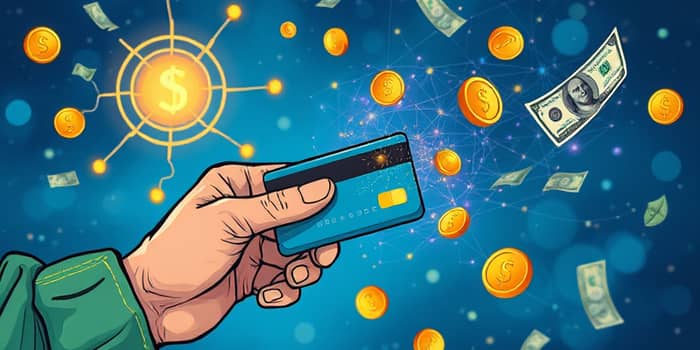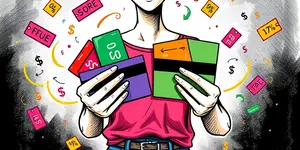
Every time we reach for a credit card, we engage more than a financial transaction—we trigger complex psychological processes that reshape our perception of money. In an era where plastic often replaces paper cash, understanding why we swipe (and why we sometimes swipe too much) has become essential for anyone seeking financial balance.
From hidden brain chemistry changes to social pressures and marketing strategies, the world of credit is rich with unseen forces. By exploring these forces, we can learn not only to mitigate reckless spending but also to harness the benefits of credit responsibly and confidently.
At the heart of credit’s allure is the reduced pain of payment. Neuroscientists have found that using a credit card significantly dampens activity in the insular cortex, the region linked to processing negative emotions. When you pay with cash, seeing bills disappear stimulates a visceral discomfort that naturally curbs spending.
Swiping a card, however, feels almost painless. Simultaneously, the act lights up the brain’s reward pathways. The striatum—your brain’s dopamine-driven reward center—responds as if to a pleasurable treat, reinforcing the behavior and encouraging you to spend more than you would if you had reached for physical currency.
Credit cards excel at creating a disconnect between spending and accountability. Unlike cash, payments are consolidated into a monthly bill, abstracting the real-time impact of transactions. This separation, known as payment decoupling, leads many to underestimate their expenditure and recall fewer purchases during budgeting.
The psychological gap widens further when individuals delay confronting their bill. Because the financial consequence arrives days or weeks later, the urgency to recognize and correct overspending fades, allowing habits to spiral unchecked until the statement appears.
For many, the combination of euphoric purchase moments and deferred consequences forms a powerful feedback loop. The pleasurable rush of buying is immediate, the pain of payment is postponed, and before long, one swipe begets another, all without the anchor of immediate loss.
Humans crave instant rewards, and credit cards deliver them on demand. The momentary thrill of a new item can soothe feelings of boredom, stress, or sadness, transforming a mundane day into a fleeting high. Yet this immediate rewards deferred costs dynamic can quickly morph into a habit that erodes both emotional and financial well-being.
Experts warn that for impulse buyers, each transaction can act like a mini “retail therapy” session. While the mood boost is real, it often masks deeper emotional needs that credit alone cannot fulfill. Over time, chasing these ephemeral highs can lead to mounting balances and mounting regret.
Beyond personal psychology, our environment shapes spending. Social media platforms amplify desires by showcasing curated lifestyles that feel just within reach with a swipe of a card. The fear of missing out drives many to match peers’ purchases, even when budgets stretch thin.
Through clever design and gamification, credit providers transform each purchase into a game of earning, rather than a loss of funds. This reframing bolsters the idea that spending is an achievement, not a sacrifice.
Numerous studies confirm that credit card users often spend up to 100% more than cash payers. This surge in spending, combined with underreporting of transactions, can leave individuals face-to-face with unexpectedly large bills. When balances roll over, high interest rates compound, trapping consumers in a cycle of debt.
Psychological denial can set in, as confronting overdue statements triggers anxiety and shame. In many cases, cardholders continue swiping, hoping the next statement will be lower, inadvertently deepening their liabilities and emotional distress.
Escaping overspending begins with self-awareness. By cultivating mindfulness around spending, individuals can recognize triggers and pause before swiping. Simple practices like tracking every purchase can bring the abstract into sharp relief, restoring the immediate fulfillment of desires to its true cost.
Another powerful technique is to reintroduce the tangible experience of payment. Consider using cash or a prepaid debit card for discretionary expenses, or setting strict limits on credit card usage. Automating bill payments and savings contributions can also remove temptation and ensure priority obligations are met.
For those facing persistent debt, seeking professional guidance from financial counselors or therapists can provide personalized strategies and emotional support, making a sustainable recovery possible.
As credit evolves into digital wallets and “buy now, pay later” schemes, the psychological forces at play will only intensify. Recognizing the hidden mechanisms—like delayed pain, reward activation, and social pressure—is critical to navigating the future of consumer finance.
By combining self-awareness, strategic boundaries, and informed choices, we can transform credit from a psychological trap into a tool for growth, empowerment, and financial freedom.
References













